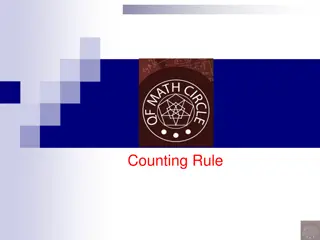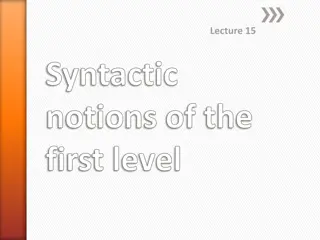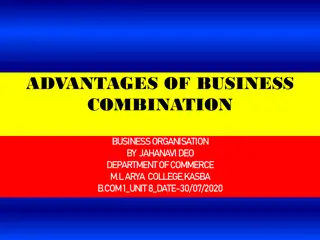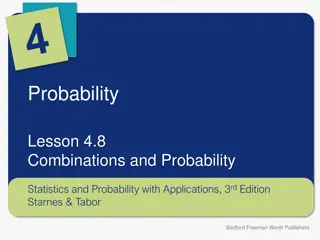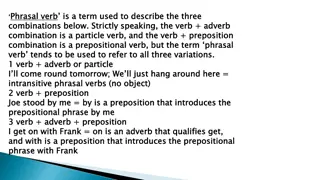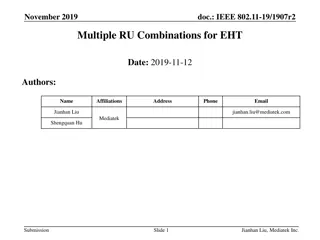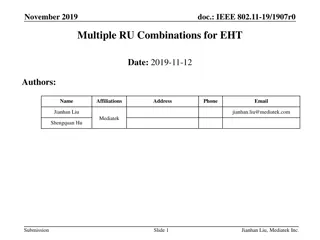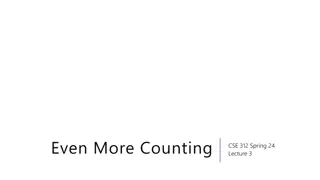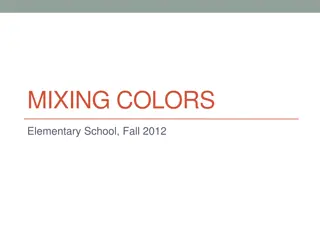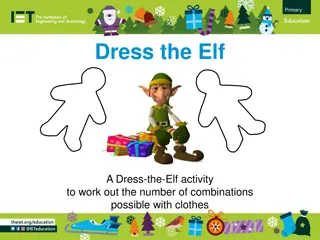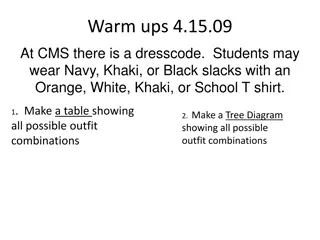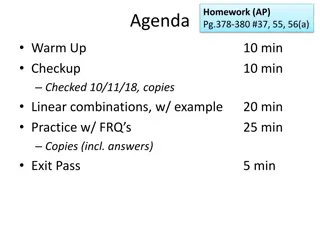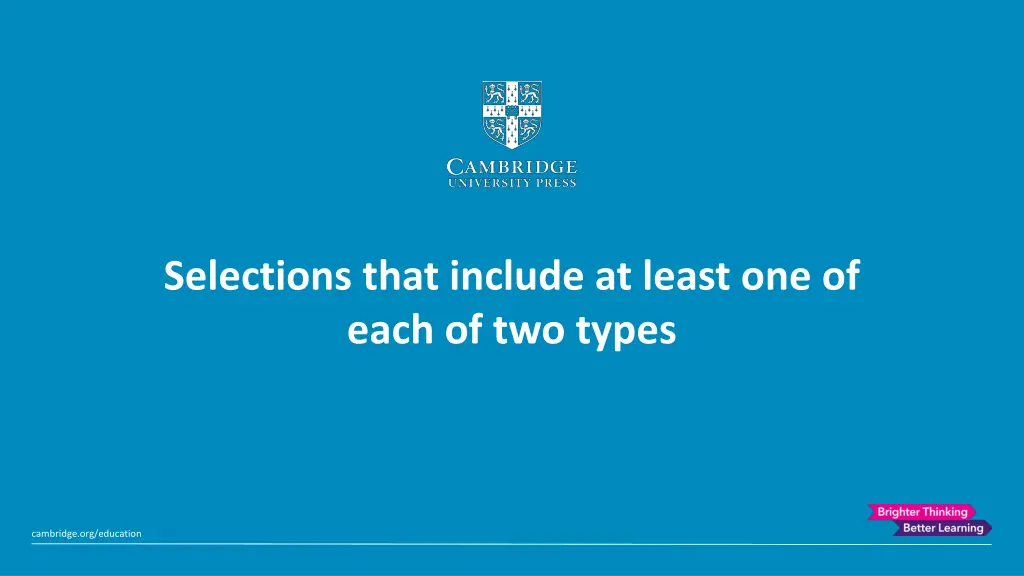
Problem-Solving Approaches in Education
Explore three different approaches for solving a problem relating to the selection of counters in a bag containing red and blue ones. The methods involve selecting counters of different colors, utilizing complements, and calculating the number of possible selections. Find detailed explanations and solutions for effective problem-solving strategies in education.
Download Presentation

Please find below an Image/Link to download the presentation.
The content on the website is provided AS IS for your information and personal use only. It may not be sold, licensed, or shared on other websites without obtaining consent from the author. If you encounter any issues during the download, it is possible that the publisher has removed the file from their server.
You are allowed to download the files provided on this website for personal or commercial use, subject to the condition that they are used lawfully. All files are the property of their respective owners.
The content on the website is provided AS IS for your information and personal use only. It may not be sold, licensed, or shared on other websites without obtaining consent from the author.
E N D
Presentation Transcript
Selections that include at least one of each of two types cambridge.org/education
Three possible approaches to solving the following problem are offered and discussed. cambridge.org/education
A bag contains 4 red and 4 blue counters. Three counters are selected at random. How many of the possible selections include at least one counter of each colour? cambridge.org/education
Three approaches 1. Select one of each colour and then select one of the remain ing six . 2. Use the fact that 'three of the same' is the compl ement of 'at least o At least one of each c olo ur ne of e a c h' . 3. Select two of one colour and one of the other colour. cambridge.org/education
Approach 1 Select one of each colour and then select one of the remaining six. cambridge.org/education
Approach 1 We can select one red counter in 4C1 = 4 ways We can select one blue counter in 4C1 = 4 ways We can select one of the six remaining counters in 6C1 = 6 ways. cambridge.org/education
Approach 1 Using this approach, the solution to the problem is 4C1 4C1 6C1 = 4 4 6 = 96. cambridge.org/education
Approach 2 Use the fact that 3 of the same is the complement of at least one of each . [If a selection does not include at least one of each colour, then it must contain either 3 red counters or 3 blue counters.] cambridge.org/education
Approach 2 We find the number of possible selections containing three of each colour, and then subtract this from the number of unrestricted selections of 3 from 8 counters. cambridge.org/education
Approach 2 We can select three red counters in 4C3 = 4 ways or We can select three blue counters in 4C3 = 4 ways. Three counters of the same colour can be selected in 4C3 + 4C3 = 8 ways. cambridge.org/education
Approach 2 The number of unrestricted selections of 3 from 8 counters is 8C3 = 56 Three counters of the same colour can be selected in 4C3 + 4C3 = 8 ways. Using this approach, the solution to the problem is 8C3 (4C3 + 4C3) = 56 8 = 48. cambridge.org/education
Approach 3 Select two of one colour and one of the other colour. cambridge.org/education
Approach 3 There are two different ways of doing this. We can select one red and two blue counters in 4C1 4C2 = 24 ways or We can select two red and one blue counter in 4C2 4C1 = 24 ways. cambridge.org/education
Approach 3 Using this approach, the solution to the problem is (4C1 4C2) + (4C2 4C1) = 24 + 24 = 48. cambridge.org/education
Results Approach 1 gives 96 Approach 2 gives 48 Approach 3 gives 48 cambridge.org/education
Discussion We know that the number of unrestricted selections of 3 from 8 counters is 8C3 = 56, so clearly the answer of 96 from approach 1 is not correct. Approaches 2 and 3 both give the correct solution of 48. cambridge.org/education
Discussion The incorrect solution of 96 is equal to 2 48. Two of the possible selections described by approach 1 are and Both of these selections include at least one of each colour, but they are combinations of the same three counters. Approach 1 is not valid because all of the 48 selections that include at least one of each colour are counted twice. cambridge.org/education
Extension activities 1. Use each of the three approaches to find how many selections of 3 counters from 5 red and 5 blue include at least one of each colour. What opinion do you have of the method described in approach 1? Discuss which of approaches 2 and 3 you prefer to use. 2. Consider selecting 3 from n red and n blue counters for Can you find an expression, in terms of n, for the number of selections that include at least one of each colour? 3. Next, consider selecting 4 from n red and n blue counters for Can you find an expression, in terms of n, for the number of selections that include at least one of each colour? counters selected? 4. How are the expressions found in questions 2 and 3 related to the number of cambridge.org/education
Answers to extension activities 1. The answer must be less than 10C3 = 120 Approach 1 gives 5C1 5C1 8C1 = 200 Approach 2 gives 10C3 5C3 5C3 = 100 Approach 3 gives (5C2 5C1) + (5C1 5C2) = 100 Again, approach 1 gives double the correct answer. It appears that all of the 100 possible selections that include at least one of each colour are counted twice. The correct solution is 100. cambridge.org/education
Answers to extension activities 2. For n= 2, 3, 4, the numbers of selections that include at least one of each colour are 4, 18, 48, 100, 180, 294, 448, 648, 900, ( 1) n n + = n n n n 2 C C C C n The nth term is 2 2 1 1 2 = 3 2 2 or ( 1) n n n n cambridge.org/education
Answers to extension activities 3. For n= 2, 3, 4, the numbers of selections that include at least one of each colour are 1, 15, 68, 200, 465, 931, 1680, 2808, 4425, The nth term is ( n n n n n n n n C C C C C C + + = 1)( 6 2) ( 1) ( 1) ( 1)( 6 2) n n n n n n n n + + n n 2 2 3 1 2 2 1 3 ( 1)( 3 1) 2) ( 1) n n n n n 2 2 2 = + 4 ( n n 2 = 2) 3( + 4( 1) n n 12 ( 1)(7 12 11) n n n 2 = 4. Order of expression = number of counters selected. cambridge.org/education


